Institutional Corruption and a Pandemic of Misinformation: Previous Proponent for COVID-19 Jabs Calls for Global Stop
In a recent study, Dr. Aseem Malhotra, a leading British cardiologist and previously a proponent for the COVID-19 mRNA vaccines, declared the global pandemic a pandemic of misinformation and called for a global stop of COVID-19 vaccinations.
“What has become clear with regard to the coronavirus disease 2019 (COVID-19) vaccines is that we have a pandemic of misinformed doctors and a misinformed and unwittingly harmed public,” he wrote in a study published on Sept. 26.
In September, Malhotra published two articles discussing the the failed COVID-19 vaccination policies and the global misinformation that facilitated these “unethical, coercive, and misinformed policies.”
His work has been shared by many doctors who have questioned the vaccine narrative early on in the pandemic including, Dr. Peter McCullough, Dr. Pierre Kory, and many others.
Malhotra’s first article addressed the misleading clinical data on vaccine efficacy, as well as current findings on the harms of the mRNA jabs.
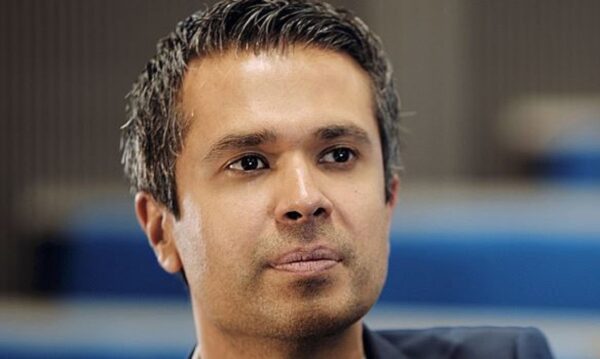

In the second study, Malhotra discussed why the public health authorities across leading developed countries have made failed policies regarding COVID-19 vaccinations, how governments missed opportunities to reduce COVID-19 severities by encouraging lifestyle changes, and a future forecast.
A ‘Pandemic of Misinformation’
“A senior doctor in regular contact with the United Kingdom’s (UKs) Chief Medical Officer Professor Chris Whitty recently expressed concerns to me that he felt most of his colleagues in leadership positions influencing health policy may not be critically appraising the evidence and instead are relying on media stories on COVID-19 and the vaccine,” Malhotra wrote.
This behavior is also reflected in health leaders in the United States.
The director of the U.S. Centers of Disease Control (CDC) and Preventions, Rochelle Walensky, conceded in March 2022 that her optimism over the COVID-19 vaccines came from the CNN reports on Pfizer’s COVID-19 vaccine efficacy, which was “an almost verbatim reproduction of Pfizer’s own press release.”
Whitty in February 2022 also publicly shared a letter outlining the importance of healthcare staff to become vaccinated against COVID-19, which was not comprehensive nor consistent with the evidence.
What’s even more ironic was that the CEO of Pfizer, Alberta Bourla, said a month earlier in an interview on Omicron that they “know that the two doses of a vaccine offers very limited protection, if any.”
“The three doses, with the booster, they offer reasonable protection against hospitalization and deaths. Against deaths, I think very good, and less protection against infection,” he said.
However, as addressed in Malhotra’s first article, Pfizer’s clinical trials showed no significant difference between vaccinated and unvaccinated on either hospitalization or deaths.
“Could it be that Prof. Whitty is also a victim of the medical misinformation mess?” Malhotra asked.
Malhotra answered that there are four drivers and seven sins at the root of the medical misinformation mess.
The drivers are that, first, most medical research is not reliable or of uncertain reliability, and therefore offer little benefit and usefulness. Second, most doctors are not aware of this problem, and, third, even if they are, they cannot evaluate data, therefore, finally, patients frequently lack relevant and accurate evidence and guidance when making their medical decisions.
The sins are that there are biases in research, in medical journal reporting, in the media, and in patient pamphlets. Furthermore, doctors and policy makers have commercial conflicts of interests, and doctors default to working in a manner to most reduce litigation risk, and cannot understand, nor are able to communicate health statistics.
Malhotra cited an example of biased data reporting:
“In September 2021, the Joint Committee on Vaccination and Immunization (JCVI) made a controversial recommendation that the Pfizer/BioNTech vaccine is marginally beneficial for 12- to 15-year-old children.”
The Medicines and Healthcare products Regulatory Agency (MHRA, the UK’s equivalent of the FDA) had previously stated in June 2021 that:
“They have carefully reviewed clinical trial data for the Pfizer/BioNtech vaccine in over 2,000 children aged 12–15 years of age and have concluded that the benefits of this vaccine outweigh any risk and that it is effective and acceptably safe in this age group … No new side effects were identified and the safety data in children was comparable to that seen in young adults. As in the young adult age group, the majority of adverse events were mild to moderate, relating to reactogenicity (e.g. sore arm and tiredness).”
Despite consistent reports of safety, an award winning investigative science journalist Dr. Maryanne Demasi a few months later published a disturbing story on Maddie De Garay, a 12-year-old participant in one of the trials.
After experiencing severe abdominal pain followed by seizures she was admitted to hospital and is now left permanently disabled, wheelchair-bound, and fed through a nasogastric tube. In Pfizer’s trial they reported her adverse effect as mild: stomach upset.
Is this in keeping with the totality of the evidence?
Malhotra wrote that while the risk of death from COVID-19 is close to zero at 1 in 76,000, “there is no high-quality data in children that the vaccine will prevent infection, transmission, serious illness or death but may come with serious side effects of myocarditis–particularly in young males where it occurs in up to 1 in 2,700–and serious disability.”
Biased and Misleading Medical Research
“It is instructive to note that the greater the financial interests in a given field, the less likely the research findings are to be true,” Malhotra warned.
Given that Bill Gates has disclosed that vaccines give a 20 to 1 profit return—a highly significant profit margin—the one-sided medical findings on vaccine benefits that persist to today are therefore hardly surprising.
“The drug companies have a fiduciary obligation to deliver profits to their shareholders, not any legal responsibility to provide you with the best treatment.”
Over the many decades of lawsuits and studies that found the pharmaceutical industry hide, ignore, or misrepresent evidence about new drugs, with medical literature distorted and misrepresented for profits, public and professional trust of medical research have been in “a growing crisis,” Malhotra noted.
It is hardly surprising that a report by the Academy of Medical Sciences in 2017 showed that 82 percent of GPs and 63 percent of the public did not believe the results of pharmaceutical industry-sponsored research to be unbiased (pdf).
Between 2003 to 2016, the top 11 pharmaceutical companies paid $28.8 billion in fines just within the United States, according to a JAMA report. Most of the criminal activity included illegal marketing of drugs, manipulation of results and hiding data on harms. No systemic changes have been made to mitigate these harms since then, reported the BMJ.
The bigger problem with healthcare is that the very policymakers, doctors, academic institutions, and medical journals responsible for patients and scientific integrity often collude with the pharmaceutical industry for financial gain, Dr. Peter Wilmshurst presented on a talk at the Center of Evidence Based Medicine in Oxford in 2014.
A 2009 study analyzing international surveys from 1987 to 2005 by respondents from higher education institutions found that 14 percent admitted to knowing a colleague who fabricated, falsified, and modified data, and 34 percent of the researchers admitted questionable research practices (pdf).
This included selective reporting of clinical outcomes in published research and concealing conflicts of interest.
“One researcher at a prestigious UK institution contacted me to inform me that in his cardiology department, a group of academics were deliberately suppressing research that revealed that the mRNA vaccine was shown to significantly increase coronary risk as determined by cardiac imaging as compared to the unvaccinated,” Malhotra wrote.
“The chair of the group expressed concerns that publishing the data may result in loss of funding from the pharmaceutical industry. After I had alluded to this on GB News, the whistle-blower informed me that non-disclosure agreement letters were sent to all members of the team involved in this particular area of research.”
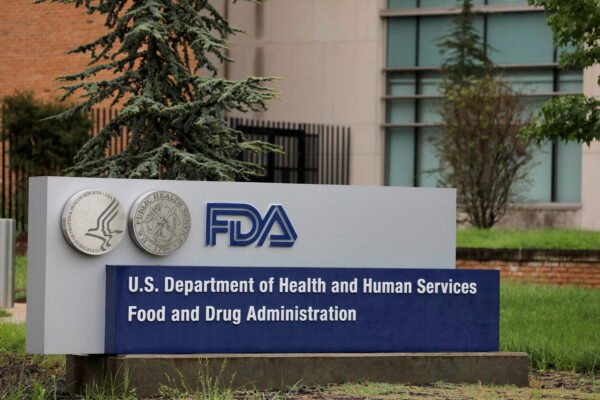

Institutional Corruption in Drug Regulators
Health authorities want the public to “trust the science,” but vaccine manufacturers have negotiated deals with several major governments globally keeping them safe from any financial liability in the event of vaccine-related harm.
This has undoubtedly harmed the public’s trust in healthcare.
India was one of the few democratic countries that refused to grant Pfizer indemnity from harms for its vaccine. An Indian government source told Reuters that:
“The whole problem with Pfizer is the indemnity bond. Why should we sign it? If something happens, a patient dies, we will not be able to question them [Pfizer]. If somebody challenges [it] in a court of law, the central government will be responsible for everything, not the company.”
Rather than taking a local safety and immunogenicity study, Pfizer withdrew its emergency use authorization for the COVID-19 vaccine in India.
India, a densely populated developing country, focused on early treatment rather than vaccination. The country managed to keep the number of deaths to 528,629 out of a 1.38 billion population. The death rate in India from COVID-19 is less than four deaths per 10,000 people.
Contrast that to the United States, a developed country where 68 percent of the population had been fully vaccinated, which had over a million deaths (1,084,282) out of 329.5 million people. This is equivalent to 32 deaths per 10,000 people, more than eight times the death rates of India.
Despite the contradictory data on COVID-19 vaccines’ abilities to control morbidities and transmissions, neither the world’s leading drug regulators nor the vaccine manufacturers have made the raw data for the pivotal trials public for independent scrutiny.
Malhotra highlighted the importance of the raw data not being publicized for independent scrutiny.
“Because historically when independent researchers have on occasion gained access to this data, then it can completely overturn the conclusion of the published trials.”
An example Malhotra cited is Tamiflu: the clinical case reports for Tamiflu ultimately showed that the drug was no more effective than paracetamol for influenza and also came with small but significant harms including nausea, vomiting, and headaches.
Yet, why was the drug approved?
Most of the drug regulators in the Western countries receive over half of their funding from the pharmaceutical industry—the industry they are supposed to be regulating.
The FDA receives 65 percent of its funding from the pharmaceutical industry, MHRA (UK) receives 86 percent and the TGA (Australia) receives 96 percent of its funding from the pharmaceutical industry.
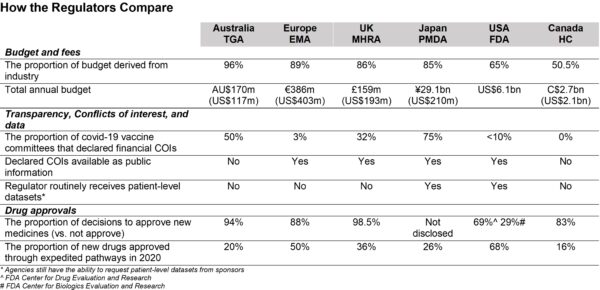

Drug regulators are dependent on the pharmaceutical industry; the FDA for example, mainly receives its funding from drug manufacturers through user fees.
Malhotra cited Pfizer’s payments as an example: as part of the approval process for its COVID-19 vaccine, Pfizer made a wire transfer to the FDA of $2,875,842 in May 2021 under the Prescription Drug User Fee Act of 1992 (pdf).
Three months later, in August, the FDA fully approved Pfizer as the first COVID-19 vaccine.
Both Malhotra and the award-winning investigative journalist Dr. Maryanne Demasi argued that drug regulators’ dependence on the drug industry was “institutional corruption,” of their own.
Demasi’s report published in June found that Australia’s Therapeutic Goods Administration (TGA), which is practically exclusively funded by the drug industry alone, approved 94 percent of all applications from 2020 to 2021. The MHRA approved 98.5 percent. The FDA approves 69 percent or 29 percent, depending on the center being evaluated.
Both the TGA and the FDA are mostly untransparent in their drug approval process. Demasi filed for FOIA reports to get disclosures on the TGA committee members who had conflicts of interest in their approval of the mRNA vaccines, but the TGA redacted the identity of these members, highlighting that it was personal information.
The FDA was sued in September 2021 by over 80 doctors and researchers to make the Pfizer injection data public. The FDA instead wanted the U.S. federal court judge to allow the agency 55 years to release this data.
“Why would the FDA—’which is responsible for the oversight of more than $2.7 trillion in consumption of food, medical products and tobacco’—do this? Secrecy should never surround any public health intervention,” Malhotra wrote.
As former editor of the New England Journal of Medicine Dr. Marcia Angell previously pointed out the real battle in healthcare is one of “truth versus money.”
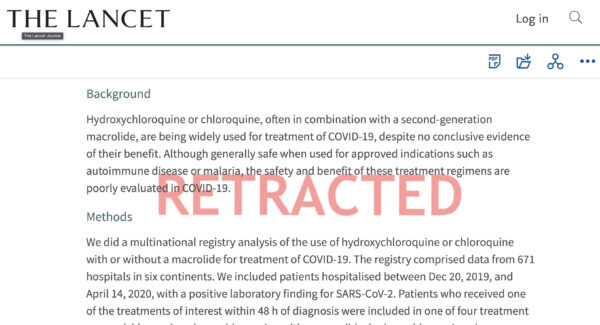

Biased Media Reporting and Censorship
COVID-19 policies were probably the most illustrative example of corporate power.
“Corporations are able to shape preferences and frame the dominant narratives on the determinants of health, through unchecked invisible power. One pathway is through the ownership of mass media,” wrote Malhotra.
The global media market is highly monopolized, dominated by seven corporations and chains that own 80 percent of newspapers in the United States.
To give an example, The Vanguard Group, which holds the most shares in the New York Times of 9.54 percent also holds the most shares in Pfizer (8.29 percent).
The Washington Post is owned by Nash Holdings LLC, a company controlled by Jeff Bezos, the CEO of Amazon. Amazon has been in partnerships with AstraZeneca and Pfizer since the pandemic.
The Bill & Melinda Gates Foundation, for example, has donated millions to the BBC, the Guardian, CNN, and many others.
“Control over advertising in print and broadcast media also has an influence over editorial decisions. Most health journalists (including a number I have spoken to) are generally unaware that the information they obtain for stories has been deliberately shaped by the private interests of manufacturers and ‘research’ universities,” wrote Malhotra.
Social media platforms continue to spread misinformation, deplatforming users and removing posts that critique the mainstream COVID-19 messaging.
Facebook even labeled the BMJ’s investigation into potential fraud in Pfizer’s pivotal trial as misinformation and stopped users from sharing the report on the platform.
“Rather than investing a proportion of Meta’s substantial profits to help ensure the accuracy of medical information shared through social media, you apparently delegated responsibility to people incompetent in carrying out this crucial task,” the BMJ’s current and former editors in chief wrote to Mark Zuckerberg.
Similarly, doctors who post studies on Twitter have routinely had their posts flagged for spreading “misinformation.”
Dr. Tracey Høeg, a physical medicine, rehabilitation physician, and with a PhD in epidemiology, said she was routinely censored by Facebook and Twitter. She has since stopped posting on Facebook, but in June 2021 Høeg posted a tweet of CDC’s own presentation slides. She commented that the slide’s data showed that the adverse effect reporting rates of myocarditis on VAERS was already higher than previous years.
Within seconds, Twitter flagged her tweet as “misleading,” to which Høeg wrote “I’m quoting the CDC’s own slides.”
The censorship is not on social media alone, but has also extended to medical publishing.
Many researchers, including Dr. Stephanie Seneff from the Massachusetts Institute of Technology, and Dr. Jean-Claude Perez, have disclosed the difficulty of publishing their studies that may critique the risks of COVID-19 vaccines.
Leading pulmonary and critical care specialist Dr. Pierre Kory on Sept. 10 at a “Reclaiming Medicine” conference said that many peer-reviewed studies that show statistical benefits of alternative COVID-19 treatments including ivermectin were retracted without explanation.
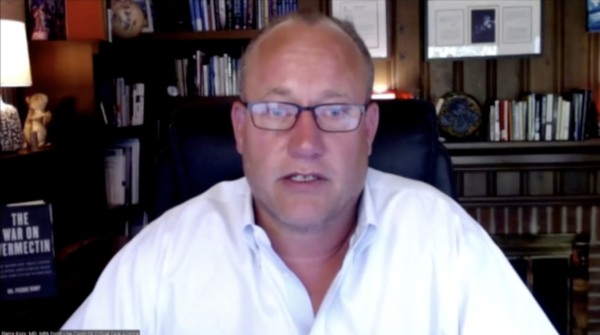

One study (pdf), authored by the 2015 Nobel laureate Dr. Satoshi Ohmura, who found ivermectin’s uses in treating river blindness and elephantiasis, was also taken down.
This in recent years has been exacerbated by coercion to get vaccinated, vaccine passports, and little mainstream coverage of “an unprecedented scale of reported vaccine harms in the population,” wrote Malhotra.
The public has felt the effects.
In the United States, adult influenza vaccination uptake has fallen in states that saw lower COVID-19 injection rates, “in the UK MMR vaccination rates have hit their lowest for 10 years.”


Missed Opportunities to Improve Metabolic Health
Malhotra wrote that COVID-19 was a failure of public messaging and policies to help individuals prevent COVID-19 harms by improving their health.
After age, the biggest risk factor for worse COVID-19 outcomes has been obesity and metabolic conditions related to excess body fat.
“More than 90 percent of the deaths from COVID-19 occurred in countries where more than 50 percent of the population is overweight or obese,” Malhotra wrote.
However, this prominent opportunity to educate people on simple lifestyle changes was not addressed, and deaths from COVID-19 between the immune compromised and those who were healthy were all blanketed as COVID-19 deaths, driving public fear in a disease that was largely exaggerated. It’s a costly omission, especially since reversing metabolic conditions is not difficult.
While a non-smoking man in his mid-50s with a normal body mass index and doing adequate levels of physical exercise has a 1 in 1,521 chance of hospitalization after contracting COVID-19, in obese, smoking, and sedentary people, this risk rose to 1 in 327.
“[Health authorities] could have made the public aware that reversal of metabolic syndrome has been shown to occur in up to 50 percent of patients–independent of weight loss–within four weeks of dietary changes alone,” Malhotra wrote.
“Even a single high blood glucose reading in non-diabetics admitted to hospital has been shown to be associated with worse outcomes,” Malhotra wrote.


Steps to Change
“There was never any evidence justifying any COVID-19 vaccine mandates, passports, or any of the other coercive measures adopted by various governments worldwide,” Malhotra wrote.
He wrote that doctors should have informed patients that their absolute risk reductions for COVID-19 infections was only around 0.84 percent, or 1 in 119, and this calculation was based on untransparent data, and that this level of protection would only last for a few months, as part of ethical practice.
“The unprecedented roll-out of an emergency use authorization vaccine without access to the raw data, with increasing evidence of significant harms, compounded by mandates that appear to serve no purpose other than to bolster profits of the drug industry, have highlighted modern medicine’s worst failings on an epic scale, with additional catastrophic harms to trust in public health,” Malhotra concluded.
He argued that the failure of the public health response in COVID-19 must be used “as an opportunity to transform the system to produce better doctors, better decision making, healthier patients and restore trust in medicine and public health.”
“Until all the raw data on the mRNA COVID-19 vaccines have been independently analyzed, any claims purporting that they confer a net benefit to humankind cannot be considered to be evidence-based.”
Views expressed in this article are the opinions of the author and do not necessarily reflect the views of The Epoch Times. Epoch Health welcomes professional discussion and friendly debate. To submit an opinion piece, please follow these guidelines and submit through our form here.
This article has been archived for your research. The original version from Epoch Times can be found here.


